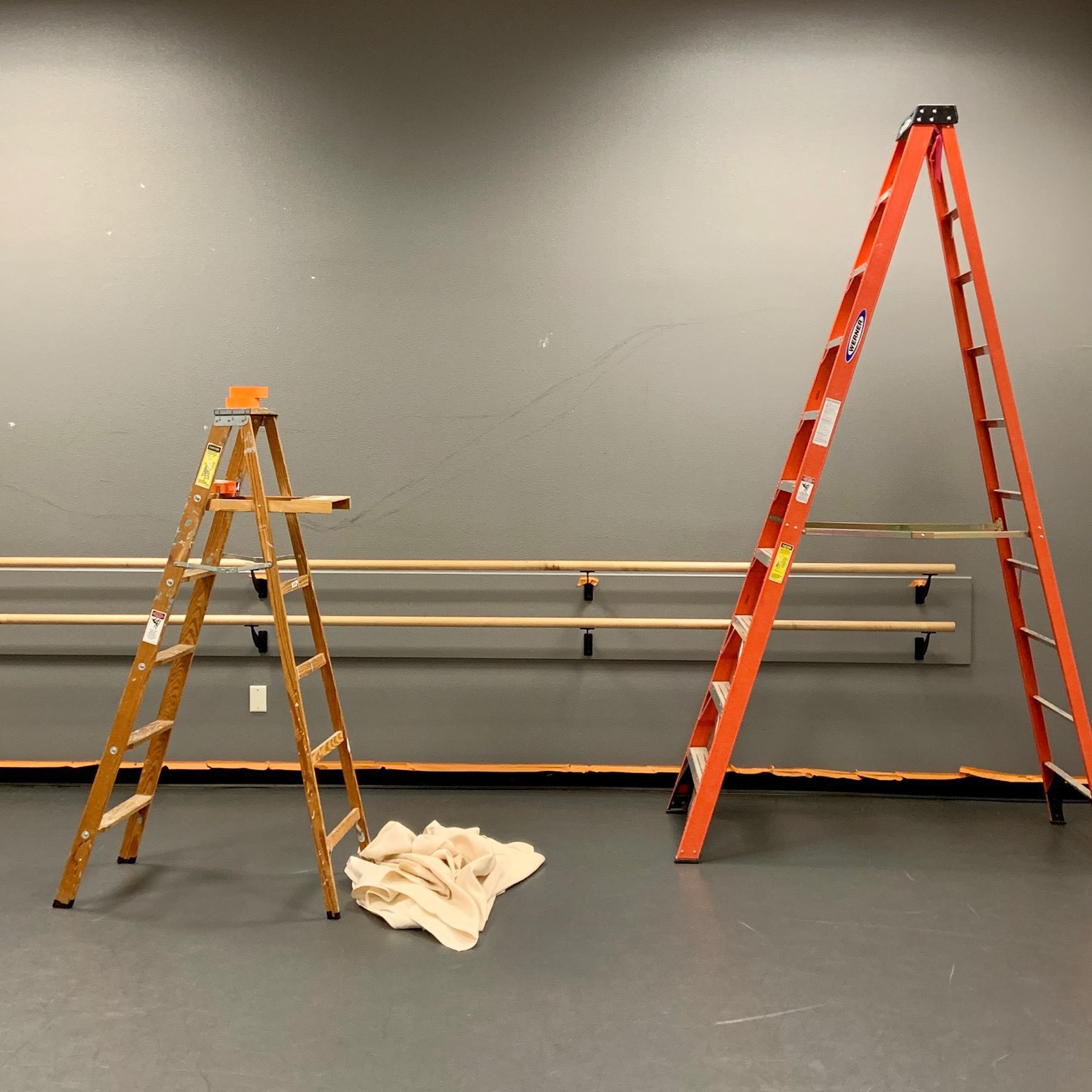Paul (Ephesians 4:26):
Be angry and do not sin.
Also true: Love and do not sin. Hate and do not sin. Desire and do not sin. Spurn and do not sin. Hope and do not sin. Assert and do not sin. Despair and do not sin. Fear and do not sin. Celebrate and do not sin. Sorrow and do not sin.
For Day 8: Contrast…this coloring book cover. 😆
<img src=“https://cdn.uploads.micro.blog/4821/2020/b8ff1ceb85.jpg" width=“600” height=“600” alt=““Happy Times with God’s Creation” coloring book cover features fox hunting its prey” />
I’m late to the photoblog challenge, but I’ve got a great one for today’s word: Above.

Read Players First: Coaching from the Inside Out by John Calipari and Michael Sokolove. I think this might be the first sports book I’ve ever read!

Dear Church leaders,
How are you doing at protecting the valuable data of your church and its members? Whether it’s less private information like the church bylaws, or very private information like membership directories, financial transactions, and personal messages, churches have a responsibility to keep its data safe.
Of course, there’s no such thing as perfect security, but there is such a thing as due diligence. And some of us aren’t doing a very good job.
Let me encourage you in this way: start thinking about protecting information online like you would offline. For example, if you wouldn’t counsel a couple whose marriage is falling apart in the middle of a public coffee shop, then neither should you send sensitive emails to that couple over that coffee shop’s public WiFi.
The data we possess as leaders of the church is valuable and we should treat it as such. Losing data, because of a hardware crash or a thief can be very expensive to recover and can even alter some people’s lives.
This means that as leaders we need to follow good practices, like the ones listed below. We also need to help shape a culture in our churches that thinks about safety not only in the nursery and in the classroom but also on the Internet. Because as a body what we do effects each other, and the good work you do can be undone if others in the church don’t their part.
Everyone can learn more at stopthinkconnect.org. But let’s get some things done today.
Here are three simple things you can do today.
- Start using a browser and search engine that protect your privacy rather than ransack it. Download Brave and switch your default search engine to DuckDuckGo.
- Secure your email accounts with good passwords and turn on two factor authentication (apps like Authy are better than SMS messages which are better than nothing). Here’s how.
- Start using a password manager today. Bitwarden is great and offers free and super-cheap accounts. Don’t wait to start. You can adjust your system to meet your needs as you go, and if it Bitwarden doesn’t work for you, it’s easy to export your data and move it somewhere else.
Here are three things you could do this month.
- Secure your home and church networks.
- Backup your data so it can be recovered in case of loss. Having local, physical backups and offsite electronic backups is a good idea. I like Backblaze.
- Install a VPN on your mobile devices. If you don’t know what that is, make it easy on yourself and just sign up for Tunnelbear. Again, you can always switch later.
Having fun? Want to level up?
- Lock down your privacy settings. Start with your most important accounts and devices first.
- Get away from businesses that require your personal data to make money. Visit nomoregoogle.com and ethical.net to find better tools.
- Own your own data. Instead of giving away your data for free to social media companies, take back control of your online presence by having your own website and posting there first. This once was difficult, but now it’s easy and cheap with services like Micro.blog and Blot.im.
Learning to use the Internet safely is empowering. And it’s easier than the other ethical alternative: disconnecting from the internet. Because if you can’t use it safely, then you shouldn’t use it.
If you are feeling overwhelmed, just go back to the things you can do today. The tools I suggest are well-respected, easy to use, and inexpensive. And if you don’t like them, you can always switch later. You’ll feel good having taken a step in the right direction.
To learn more, follow the links above and consider subscribing to a couple blogs to keep current on the issues.
See you online.
Happy Data Privacy Day. Learn more: staysafeonline.org.

Cybersecurity needs and threats change. If you want to keep current on recent threats, get tips for online safety, and read other cybersecurity related news, consider subscribing to one or more of these blogs. They’re good for non-professionals like me.
My daughter and I are learning about God’s amazing planet Saturn.

This is entry 6 of the blogchain TBRI.
TBRI is rooted in attachment theory, as seen in this animation.
I’ve done some more reading and thinking about attachment theory and it’s level of helpfulness in light of the Bible’s teaching. And I plan to share some of my conclusions thus far. But until then, here are some short essays worth considering.
The first is a careful and solid review of a popular book called God Attachment. The second was more enjoyable to read, though I wished it was more precise in a few places. It contains an overview of attachment theory ( the first does too) and several helpful theological observations.
If all goes well, these pieces of birch plywood are going to become tap dance practice pads for my kids.

Friends sometimes tell me they wish they had my faith. When this happens, I gently point out that they do: they just put it in other things. Faith isn’t an extra app that some people have. It’s our core OS.
Notebooks is about to get several major upgrades. According to Screen Time, it competes with Brave for my most used app. I still agree with what I wrote almost a year ago. And these upgrades are going to make it even better. Yay!
This is entry 5 of the blogchain TBRI.
Words are powerful tools to help get kids back on the right track. So it’s helpful to have a toolbox of reliable phrases you can turn to again and again when responding to behavior problems or potential behavior problems.
The following phrases are recommended and modeled by Karen Purvis in these TBRI training videos, especially Chapter 4. Watch them if you can because it’s helpful to see these words used in real life.
I’ve separated them into engagement-types, but don’t be rigid. Many can be used in multiple categories, so be curious and try things. And remember to keep your relationship goals in mind in addition to your behavioral goals.
Level 1 (Playful Engagement) Words
- “Would you please try that again with respect?”
- “Let me see your eyes.”
- “Give me eyes.”
- “Try nice words.”
- “Can you try that again?”
- “Would you like a redo?”
- “With respect.”
- “Gentle and kind.”
- “Use your words.”
- “Are you asking or telling?”
- “What do you need?”
- “How’s your engine running, buddy?”
Level 2 (Structured Engagement) Words
- “Sweetheart, you have two choices…”
- “Sweetheart, if you’re asking for a compromise you need to do it with good words.”
- “No hurts.”
- “Listen and obey.”
- “Can you calm your engine on your own or do you need help?”
- “What did you do wrong? How could you do it right?”
Level 3 (Calming Engagement) Words
- “Let’s (get and ice cream cone/do some art/take a nice walk) and talk about this.”
- “You need to think about what you did wrong and how you can do it right. When you’re ready. You say ready. I’ll be right here.”
This is entry 4 of the blogchain TBRI.
Meeting the physical and connection needs of a person—big or little—can help with a wide range of behavior problems and other challenges. Here are some things TBRI suggests that have been helpful to my family.
Physical Needs
- Give healthy food every two hours.
- Keep hydrated.
- Learn and practice deep breathing. (I like the idea of “bubble breaths” and “smell the pizza”, which I learned of elsewhere.
- Use sweet smells and tastes to calm down. Purvis suggests putting cotton balls in a film roll container (if you can find one!) with a drop of vanilla.
- Have regular physical activity like walking, running, dance.
- Build in regular mini-moments of exercise like a quick set of push-ups or a few laps around a basketball court.
- Build self-awareness. How is your egine running? If it’s running to fast, what can you do to calm down? Running too low, what can you do to rev it up? Running just right? Great!
- Chew gum.
- Suck water out of a water bottle.
Connection Needs
- Watch carefully for physical signs of stress (shallow breathing, tight hands, dilating pupils, tight face). They are feeling stress and will probably react soon.
- Watch the environment carefully. Is something overwhelming, too loud, going on too long?
- Ask, what does this child need right now?
- Watch for physical signs of stress in yourself. Practice calm presence. This models and leads the way. Provides reassuring safety among other things.
- Use valuing eye-contact. Can I see your eyes?
- Use proximity, get close. Get down on their level. Time-ins instead of time-outs.
- Take time together doing activities they enjoy. Purvis calls these “bridge activities”. Find a time and space the child enjoys. Use this to connect and practice good things.
- Make sure to reconnect after coming down from a conflict. Let me see your eyes. I love you. What do you need? You can ask for a compromise.
- Healthy touch is very powerful. Firm, calming touches that reassure love are huge.
- Give full attention whenever possible. If not possible, give it for just a few seconds: I want to hear what you have to say, but I need to do X right now. Let’s talk about it when I’m doing Y.
- Teach how to use words and listen well. Learn to use and teach them to use certain scripts. Practice with role play and mirrors.
This is entry 3 of the blogchain TBRI.
After working my way through an online TBRI course, I’ve concluded that there is an essential set of skills and beliefs that TBRI rests on. I doubt the importance and veracity of a few things it promotes, and I think TBRI neglects the most important element of bad behavior: Sin. But I find the following list of core skills and beliefs that TBRI promotes to be true and very beneficial.
-
For kids, you should normally aim for a connected, playful level of engagement. (I’d guess something similar is probably true for adults.
-
Achieving and maintaining this kind of engagement requires both proactive and responsive strategies.
-
Care for the whole person. This is related to mercy and empowerment. A person’s needs are physical and non-physical. Responsive correction is most effective when a person is empowered and connected.
-
It is important to be present and mindful of your own needs, as well as the needs of the person you are trying to help. Long-term success depends on it.
-
Learning works well in a calm, alert state. Respond to bad behavior, but use proactive strategies too.
-
Be deliberate and clear about your level of expectations; be ready to raise and low the bar as needed.
-
Teaching how to use words to solve conflicts is a good idea. Learning to use words well empowers us to solve conflicts in good ways and reduces dependence on ineffective and destructive strategies.
-
Remember that with people from hard places, co-regulation is often necessary before self-regulation is possible.
-
Remember that just because someone is safe doesn’t mean they feel safe. Stress hormones, for example, don’t magically disappear just because someone hears “get over it.”
-
Learn and use I.D.E.A.L responses, which requires knowing how to escalate the level of response and how to get back to connected, playful engagement.
This list is a high bar for those who aim to be helpers. And it doesn’t even include the spiritual needs of a person, which must also be considered. But putting these things into practice is important and worth the effort.
We had a great time a few days ago at the Winterhaven Festival of Lights. It was put on for charity this year by these amazing Tucsonans for the 70th time!
Read Ultralearning by Scott H. Young. It’s a great book for anyone wanting to improve their ability to learn.


